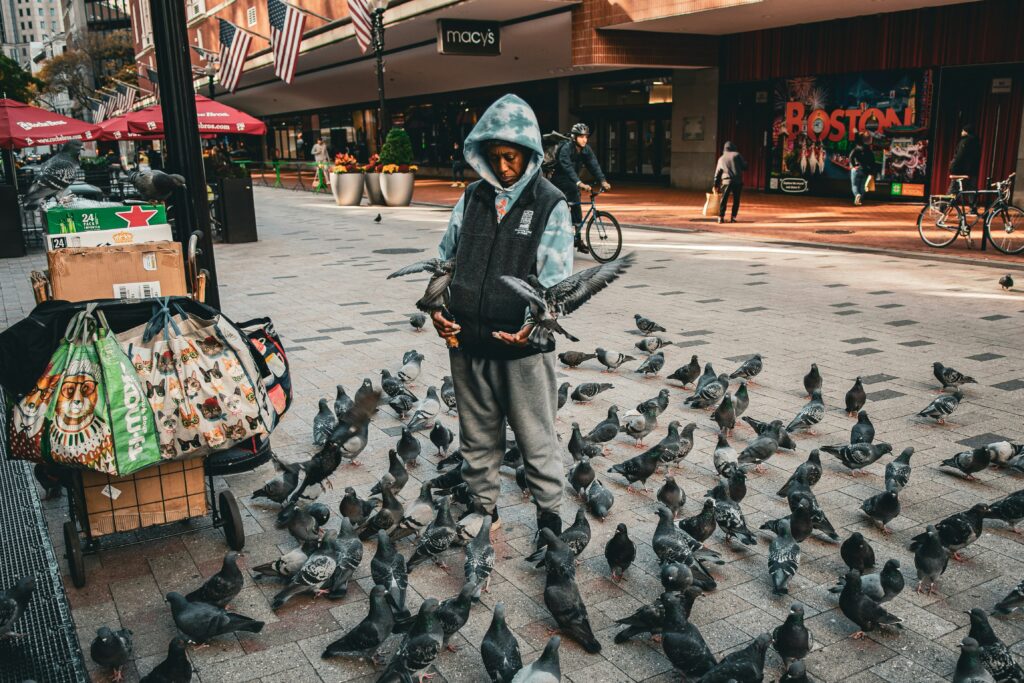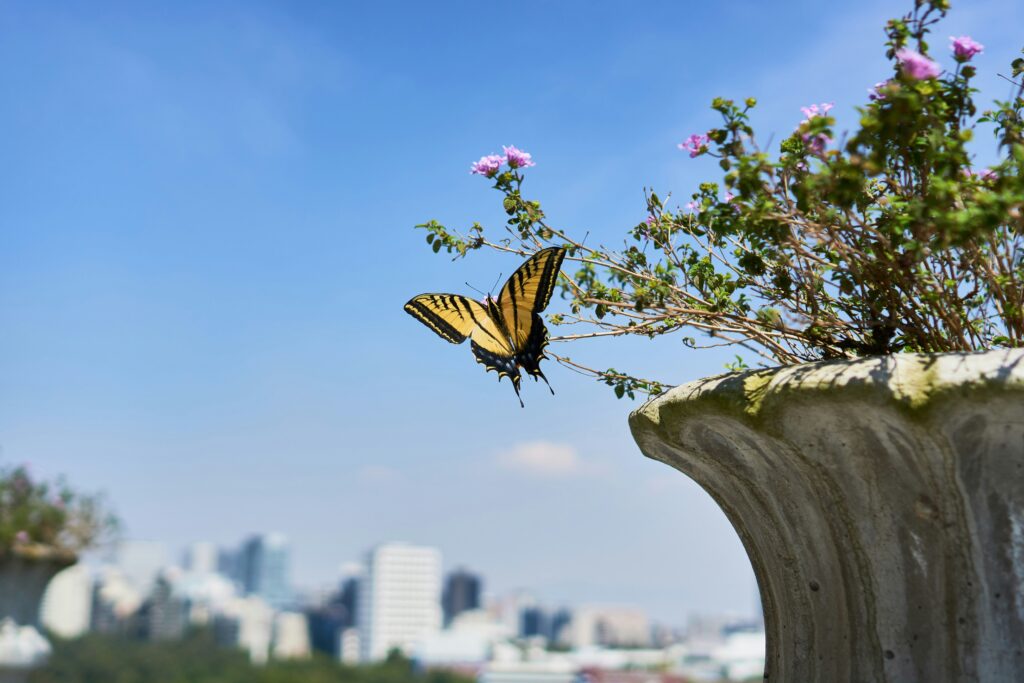How to Write About Nature in Cities
Messaging that inspires support for urban biodiversity and nature-based initiatives.
by Karl Dickinson – 16.04.25
Messaging that inspires support for urban biodiversity and nature-based initiatives.
by Karl Dickinson – 16.04.25
When in Rome: it’s high time we learnt how to live alongside nature in urban spaces. Image credit: Unsplash / Peyman Shojaei
Resilient cities are those that contain thriving natural elements, but many citizens are still oblivious to the presence of biodiversity around them, or the need to encourage and protect it. These tips for writing about nature in city settings may help authors improve how they communicate in the hope that more readers will become advocates for and stewards of urban nature, greenery, and nature-based initiatives.

KARL DICKINSON
Karl Dickinson is a writer, editor, and podcaster who has been creating content about sustainability and urbanism since 2021, including water management, energy renovations, and social inclusion. Motivated by a vision of the future where people and nature coexist in harmony, Karl is keen to share the stories of greenery and biodiversity which inspire others to act. He has written for platforms such as CityChangers.org and Apolitical and has had articles translated into German, Polish, and Spanish.
In the wake of COVID-19, the European Commission published its EU Biodiversity Strategy for 2030. This is just one of a growing number of reports that acknowledge the urgent need for a more prominent presence of nature in cities. Human wellbeing and resilient societies rely on “the health of ecosystems”, it says, laying out an objective for “European cities of at least 20,000 inhabitants to develop ambitious Urban Greening Plans by the end of 2021”.
Four years later, exactly how much progress has there been?
Despite the use of inner-city parks surging during pandemic-enforced isolation – up by 300% in the UK, for example – research suggests that we still undervalue the importance of urban nature in its different forms. Elected leaders are rarely handed a mandate to “green up” so it’s not handled as a priority, if at all. More often, it seems they scapegoat nature for political gain: opposing UK Prime Ministers Keir Starmer and Boris Johnson have both taken aim at policy protecting rare species’ habitats for preventing development. That does not send a useful message to cities expected to formulate those ambitious green plans.
As advocates for urban nature, it’s up to us to take a more positive tone.
During my time as a journalist for Urban Future’s knowledge platform CityChangers.org, I picked up a few pointers for effectively communicating about urban greenery and biodiversity. What follows is a selection of the methods I employ to give them broad appeal in the hope that it’s of use to others tasked with doing similar.
I was recently told by a representative whose job it is to communicate one local authority’s climate emergency plan that their citizens’ average reading age is just nine years old.
Always write with that audience in mind: use straightforward language and assume the reader knows nothing.
Explaining in simple terms what urban nature comprises and what Nature-Based Solutions (NBS) actually are ensures that no reader is alienated.
Even the most basic information is enough to help any audience see the potential for nature where they live. It can be as simple as dedicating page space to the surprising range of urban habitats, so try to put this diversity in the spotlight:
That’s not to mention green corridors like grass verges and planted riverbanks, blue-green networks that connect other natural spaces and encourage wildlife to migrate into and around a city. What seems obvious to the initiated could be a revolution to someone encountering the idea for the first time.

We can further reinforce the relevance of urban nature by referring to real world case studies.
Avoid hypotheticals like as-yet-unrealised projects. This is a chance to showcase what’s proven to be possible. If it’s happened once, it can be replicated.
Incorporate first-hand knowledge from people who have taken on the challenge with the intention to initiate a “if they can do it, so can I” response.
Represent what went wrong and allow them to talk freely about what they learnt from the experience. The more we do this, the closer we get to disarming the fear of failure, which encourages further experimentation. It also helps others not to replicate the same mistakes.
There’s no doubt that we’ll achieve more by working together. That’s the founding principle of the What’s That Green? community. To optimise that potential, we need to dismantle division.
When Hanah Lahe from the left-leaning Estonian Reform Party set up an impromptu pocket park in two car parking bays outside Estonia’s parliament building, she did not predict that climate sceptics and conservative politicians would end up using it to rest in or host press interviews.
This serves as a reminder that we all carry an inherent connection to nature.
Hanah stopped short of calling out the hypocrisy of the right-of-centre commentators. In much the same way, we must know when to show restraint: an apolitical and pro-nature stance can make use of that common ground we all share and turn the opposition into allies.
Fortunately, because we feel that natural connection to nature, it can be easy to convince people of the benefits it offers.
Having said that, we have a habit of echoing the same messages over and over, which gets stale. People switch off to the white noise. Take greenery as an example, which we always say:
All valid points, of course, but do we still hear it? Also, this leaves us with the impression that the only purpose of nature is to serve human interests. That’s a toxic subliminal message in itself.
It’s time to change the record.
We need look no further than the Grey to Green initiative in Sheffield, UK. It uses refreshing, nature-centric language to present biodiversity on a par with its human neighbours.
“Grey to Green keeps in mind all the living things that call the city home,” the website says. “As well as forming new footpaths and cycleways, it creates safe green routes for wildlife” and “enables new ways for birds, bats and insects to move about within the city centre.”
This challenges another common narrative too. We’re all familiar with the label “pests” that animals such as rats are landed with. That implies that certain species don’t belong in the city; that existence is only permitted on our terms. It’s important to remember that we have a place within an ecosystem and that even “dirty” creatures provide advantages, like how pigeons clean up food discarded in the street.
Our established attitude also fails to recognise the colonial nature of urban sprawl. As cities expand and consume more and more green space, wildlife will either adapt or perish. It’s a marvel of nature’s resilience when species learn how to thrive beside us. The least we can do is disengage the corrosive language that “others” less-desirable species. Like it or not, we’re all in this together.

At a recent Urban Future conference, a speaker from ISGlobal talked of how people are more easily convinced of the need for nature if presented with its potential for saving lives.
Their point was, this is a topic with universal appeal and we can win citizens over by speaking of how urban nature contributes to that. For example, green space gives people places to exercise and acts as a buffer to air pollution – both with clear health benefits.
We should treat this with some caution, however. It’s true that people care about people, but as the scale increases, our concern dissipates. Reserve this strategy for local initiatives.
Whatever the message we’re attempting to share, we can make it more accessible through storytelling.
We’re programmed to absorb information told in a linear narrative. Injecting emotion, humour, and relatable scenarios both holds our attention and gives us a vehicle to break down complex notions. It’s what Aesop did with his fables. For more impact, make it fun. A boring story may as well not be told at all.
The NBS EduWORLD Project recognises this and has taken steps to simplify powerful storytelling by creating a toolkit for educators. Complete with exciting graphics and a range of comics, it’s designed to help young people in particular learn about different nature-based topics, from planting trees to biodiversity.
Counterintuitively, this proves that sometimes the most effective way to communicate is to not write at all.
Images instead can be used to efficiently depict information that would be too verbose, complex, or dull to communicate in text alone. Enhance your messaging by embracing infographics where it makes sense.
In the USA, green has a secondary, somewhat relevant, meaning: money.
It’s hard to avoid the appeal of financial gain. It can be a persuasive tool for certain stakeholders, most notably representatives of the business community and municipal budget holders.
Truth be told, green space is the fiscal underdog. Urban residential land can be worth as much as €9,000 per m2 in cities like London, where the same area reserved for commercial purposes drops to just €712. The market value of greenery is negligible
But it does have value. Plenty of it! So tell people.
The Land Trust reports that green space significantly increases the price of houses nearby, and has a knock-on impact for trade too. The Livery Climate Action Group claims that greenery generates 16 times as much as it costs to maintain, making it a great investment: “The bottom line is that this is worth £282.6 million each year in benefits to society, and £8.1 billion over 50 years.“ And that’s just in London!
As the UK’s National Lottery advises, we can make persuasive arguments in favour of urban naturing by expressing total economic gains. This is what gives new meaning to those repetitive messages we’d otherwise dismiss: the likes of job creation and money saved by boosting inhabitants’ health are significant economic levers.

Just don’t rely on too many stats, readers can get fatigued from that. At the end of the day, trust your instinct: if you’re interested in the story you’re telling, then your audience will be too.